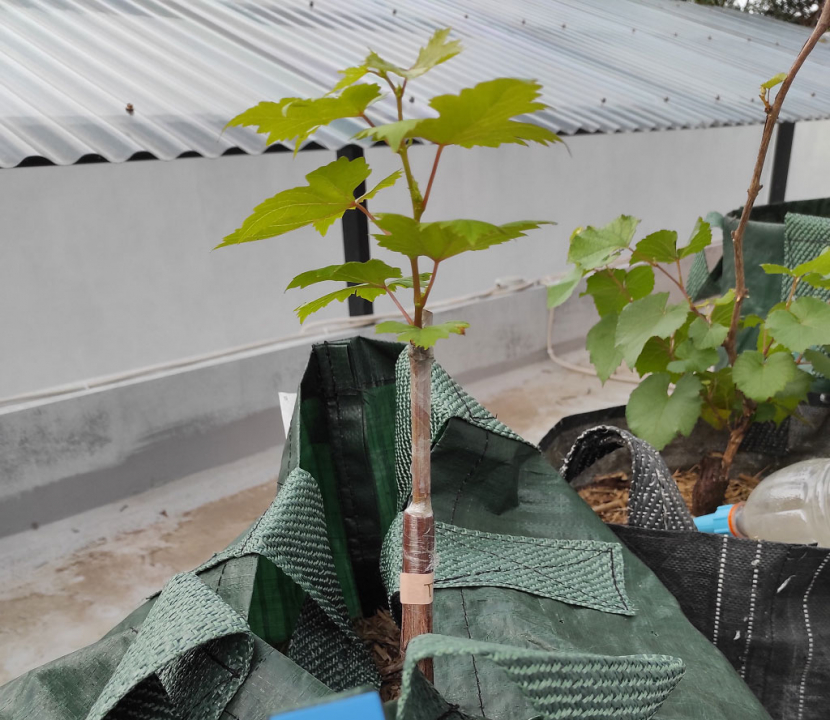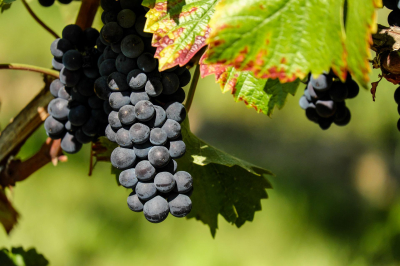Who doesn’t like grapes? Besides it tastes delicious and refreshing, it is also rich in nutrients and high in antioxidants. There is energy, protein, fat, carbohydrates, calcium, phosphorus, magnesium, sodium, potassium, iron, zinc, vitamin B1, vitamin B2, vitamin B3, vitamin B6, pantothenic acid, folic acid, vitamin C, vitamin K, fiber, and water.
With a myriad of substances contained in it, grapes can slow down aging, maintain brain health, relieve symptoms of allergies and inflammation, maintain healthy skin, lower cholesterol levels, prevent cancer, and improve sleep quality.
Unfortunately, the price of grapes is relatively expensive compared to other fruits. The price of sweet grapes on average is above 80 thousand per kilo gram and can even reach 100 thousand more if the wine is of super quality. With that price, it seems you will think about buying it, especially if you want to consume it every day, well, you can come up short.
Scroll to read
Scroll to read
<!– – –>
<!–
Luckily, now grape cultivation is not as difficult as it used to be. Many people now plant vines in the yard of the house, even in a narrow area can. As long as it is exposed to direct sunlight for at least 8 hours so that it can grow perfectly.
Most of these grape hobbyists still grow using synthetic chemical fertilizers. Such as the use of a balanced NPK fertilizer 16-16-16 for the growth or vegetative period and the use of white KNO3, MKP and Boron fertilizers for the fertilization or generative period. Plus the use of chemical pesticides to treat fungi, whitefly, and others.
Well, by planting and caring for grapes like that, you might think again about eating them, especially if you want to adopt a healthy and natural lifestyle.
Luckily, now there are grape cultivators who apply their treatments organically, starting from the use of fertilizers to pesticides.

Quoted from several Youtube channels that discuss organic grapes, here are 10 Tips for growing grapes in pots organically
1. Determine the Planting Place
If you want to grow grapes in pots or planter bags, you should use a large size, recommended size of 100 liters or more for maximum growth
2. Selection of Early Grape Seeds, Easy to Fruit
Choose seeds of grape varieties that are early to bear fruit such as Ninel, Jupiter, Harold, Julian, Black Phanter, Akademik, Trans, Viktor, Nizina, Everest, Fragrance Rose
3. Buying Seeds from Trusted Places
Make sure to buy seeds from a trusted place. Seeds come from the results graftingA graft taken from a vine that has already been fruitful. Seedlings already have dark green leaves of at least 10 leaves and have many and strong roots
4. Transferring Seedlings to Pots or Planter Bags
Before the seeds are put into the pot, the seeds are treated first by watering them with onion water or rice water or Vitamin B1 solution
If the seeds are purchased from a remote location, the treatment that needs to be done is that the seeds are quarantined for 2 weeks first by being transferred to temporary pots, shaded, and not combined with other vines so that if they get sick they don’t attack other vines.
5. Preparing the Shaft Planting Media
The planting media must be pivot so that when watered, the water does not stagnate in the planting media, but goes straight down to the outside. A porous medium will prevent root rot in plants. The composition of the proros grape growing media consists of:
1 bucket of roasted husks
1 bucket of stale husk
1 bucket of goat kohe has been fermented
1 bucket of soil or better bamboo humus
1 person comp
Dolomite lime to taste
Trioderma mushroom (better)
2 handfuls of fish meal mixed in the growing media
At the bottom of the pot, add tile fragments or wood charcoal to avoid mold and ensure the porosity of the planting medium. In the rainy season, the composition of burnt husk is more than that of soil.
6. Transferring Seedlings to Large Pots
Make sure before transplanting the seeds into a large pot, the seedlings are fresh, marked by many roots and the leaves have grown new shoots, look fresh and healthy
7. How to Plant in a Big Pot
Insert the seeds into the planting medium by adding a little beef bone flour plus roasted husks. Mycorrhizae can also be added to increase plant resistance. Then doused with vitamin B1 or POC or English salt or also with red onion water
8. Move the Plant to a Place with Direct Sunlight
Grape plants really need sunlight to accelerate their growth. Try to place the pot in a place that always gets sunlight all the time. A minimum of 5 to 7 hours of sunlight per day.
9. Prepare Organic Fertilizers and Organic Pesticides
Organic fertilizers that need to be prepared are POC (Liquid Organic Fertilizer) which we can mix ourselves from used rice washing water into JAKABA, POC from stacked bucket model organic waste, fertilizer fish emulsion a concoction of fish, tape, coconut water, onion skin, stale rice and bananas. Can also use PSB ingredients ( photosynthetic bacteria ) from eggs, pond water and mice.
10. Doing Routine Maintenance
Routine maintenance is done by watering the plants with water once every 2 days or it can also be watered once a day depending on the porosity of the planting medium and the weather conditions. Fertilize plants with POC once a week and add fermented goat manure once a month.
Spraying botanical pesticides made from JS (Jadam Sulfur) and JWA for concentration once a week or depending on the disease that appears. Or with other botanical pesticides which are all fully organic.
-“).attr({
type: ‘text/javascript’,
src: ‘https://platform.twitter.com/widgets.js’
}).prependTo(“head”);
if ($(“.instagram-media”).length > 0)
$(”


